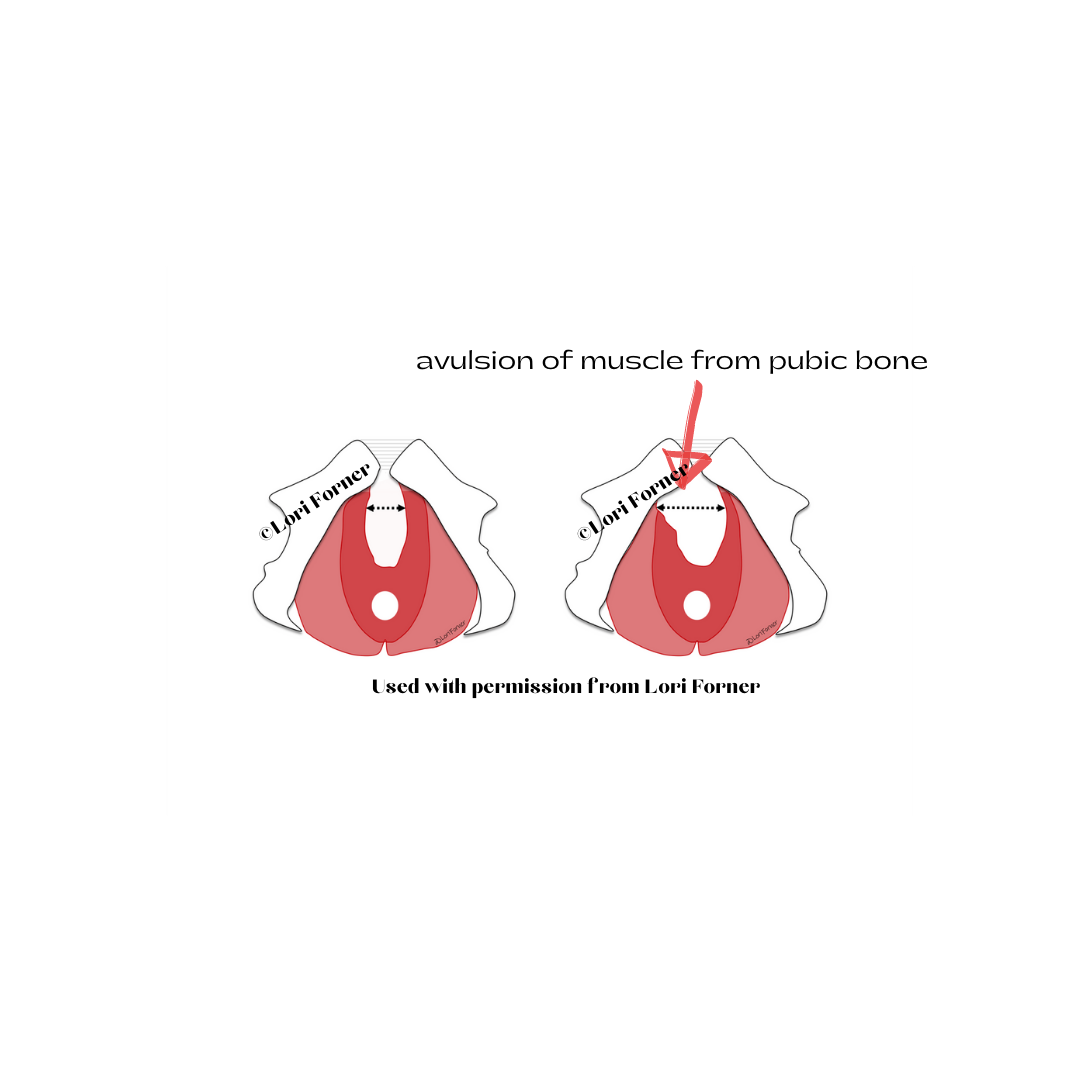Choosing an antenatal or postnatal pelvic floor exerciser

Planning a pregnancy
Pregnancy is not the time to suddenly decide to ‘get fit’, being so beforehand is ideal and remaining generally active and exercising regularly is a good goal during pregnancy as long as you have no complications (be advised by your own medical team here).
Maintaining good pelvic floor function throughout life should be a priority so a good place to start would be to see a pelvic health physiotherapist for an assessment and advice prior to pregnancy. Being educated and aware is invaluable.
You may also choose to look at a biofeedback device or pelvic floor weights (also known as kegel weights or balls) to help with your strengthening.
Also be aware that pelvic floor dysfunction isn't always due to a weak pelvic floor. It can in fact be caused by a pelvic floor that is too tight and unable to contract properly to generate force or due to being unable to relax properly. Overall function, not just strength, is the aim.
If you have any issues with pelvic pain, bladder or bowel function now is the time to get it looked at and sorted out before falling pregnant if possible.
Products that may help pre-pregnancy
To fully prepare for pregnancy, birth and beyond, I recommend several books:
- Why Did No One Tell Me? is a newly published book by UK physiotherapist Emma Brockwell. It covers everything from your anatomy and how everything works right through to returning to running postnatally. An excellent resource to have on hand to help you through each stage.
- Hold it Mama by Australian physiotherapist Mary O'Dwyer is another great resource which has been trusted by new mums for many years.
If you are wanting to improve your pelvic floor muscle strength before becoming pregnant you may benefit from using:
- a biofeedback device so you know you are doing your exercises correctly. Many of them also help you progress and improve. They can all also be used postnatally once you have been cleared by your medical team.
Some good choices are:
Pelvic Floor Educator
Perifit
Elvie - Vaginal or kegel weights can be helpful for strengthening and also give excellent feedback because if you are not using the correct muscles, they will be pushed out!
Many of those available are also progressive – allowing you to increase the amount of weight you are using.
Some good choices are:
Aquaflex Pelvic Floor Exercise System +/- Add-On weights
Intimate Rose Kegel Exercise System
Nova Balls
Luna Beads which also come in Mini which are the same weights but a bit narrower
During Pregnancy
Both mum and baby benefit from remaining active during pregnancy. Benefits of general activity during pregnancy include:
- Helping you to prepare for labour and recovery
- Can lower the risk of gestational diabetes
- Can help with back and pelvic pain
- Lowers the risk of incontinence postnatally – when you do a dedicated pelvic floor exercise program during pregnancy
- Can lead to better mental health, including a lower risk of postnatal depression.
The Australian Government Department of Health recommends that as long as you and your baby are healthy, you should aim to meet the adult physical and sedentary behaviour guidelines which means:
- Being active most days, preferably every day, to a weekly total of either:
- 2.5 to 5 hours of moderate intensity physical activity
- 1.25 to 2.5 hours of vigorous intensity physical activity
- an equivalent combination of moderate and vigorous activities.
- Do muscle strengthening activities at least 2 days each week. Aim to do strengthening such as light resistance training or bodyweight exercises.
- Doing any physical activity is better than doing none. If you do no physical activity right now, start by doing some, then slowly build up to the recommended amount.
Your pelvic floor during pregnancy
There is evidence that strong pelvic floor muscles prior to, and during pregnancy, can assist labour and help reduce pelvic floor issues after childbirth.
Most manufacturers DO NOT recommend using their insertable products during pregnancy.
If you want to continue using one then check with your medical team first.
It is important though to keep doing some pelvic floor exercises throughout pregnancy and if you have learnt how to properly before you became pregnant then you will be able to continue throughout unless advised otherwise.
There are some excellent options with many health professionals running specific pregnancy programs like pilates, yoga and general strength classes.
If you are looking at joining a class or signing up for one online, do your homework to ensure the instructor is suitably qualified. Pelvic Health Physiotherapists and Exercise Physiologists have specific training in this area.
The books Why Did No-One Tell Me and Hold it Mama continue to be excellent resources to read throughout pregnancy.
Labour
Using a TENS machine during labour can be very helpful for pain relief. It works best if you start usning it from the early stages.
Obstetric TENS has a specific program set that has been shown to be the most effective during labour.
Exercising postnatally
The very early days postnatal are all about recovery and overcoming swelling, bruising and protecting any stitches so be guided by the health professionals looking after you as far as what exercise you do and when.
Why Did No One Tell Me? And Hold It Mama will continue to be the best possible resources to refer to for all pelvic floor and general issues you encounter in the postnatal period.
Always wait for advice from your treating health professionals before resuming exercise and you should not start using an insertable products until you have been cleared by your obstetrician, GP, physiotherapist or midwife.
The best thing to spend money on initially is a pelvic floor assessment with a reputable pelvic health physiotherapist who can then guide you as to whether you actually need to use a device or not .
If you were attending a class during pregnancy, you will often find those providers also run postnatal classes.
Once cleared there are a number of excellent products that can help you and your pelvic floor.
When you choose a device for pelvic floor muscle training postnatally, you should consider:
- Type of delivery you had
- How your pelvic floor is currently functioning
- What will fit into your new routine? as you don’t want to spend money on a device and find you can’t find the time or privacy to use it if that is required.
Some questions to ask yourself:
- Are you already able to locate your pelvic floor muscles, and now want to build strength?
- Do you need help to locate your pelvic floor muscles and know if you are squeezing correctly?
A biofeedback device may be best - Do you want a product you can use while you move around?
Vaginal or kegel weights may be best - Are you able to allocate the time each day to lay down or stand still whilst you exercise your pelvic floor?
Using a feedback or Bluetooth device like Elvie or Perifit may be best - Do you need help to get your pelvic floor muscles working again? especially if you cannot contract them.
Electrical stimulation may be the best option to start with.
Before deciding!
Not all pelvic floor exercise devices are the same size and neither are all vaginas!
To work out what device is best for you (and this includes electrodes for using with EMG and electrical stimulation) you need to know your vaginal width which is the size of the gap between the left and right sides of the pelvic floor.
This will be larger than it was before you were pregnant, more so after a vaginal birth than a caesarean but just being pregnant will have a stretching effect on your pelvic floor. Don’t panic, this is all very normal and most women will gradually regain better control of their pelvic floor muscles as they recover.
To check your current vaginal size so you can decide on a device have a look at our page Testing vaginal size for correct product choice.
The diagram below is used with kind permission of Lori Forner and helps to explain what I mean by your vaginal width (you may have heard the term hiatal width). Approximately 20% of women will experience an avulsion, or tear, of one or both sides of the pelvic floor muscles during vaginal birth. Forceps increase this risk.

Choosing a device postnatally
Your choice will depend both on your physical needs, and also on your lifestyle.
For choosing the right device for your needs, following our step-by-step guide can help.
If you are still unsure, discuss your specific needs with your health professional, and remember that it is quite normal to have greatly reduced muscle tone, and even some level of incontinence, in the early weeks and months after childbirth.
Pelvic floor weakness and stress incontinence are common after childbirth. But if your stress incontinence is still present three months after your baby is born, it is unlikely to improve on its own. Research shows that the majority of women who suffer from SUI at three months, still have the problem after 5 and even 12 years unless they take steps to treat it.
Progressive vaginal cones (Aquaflex) can be very helpful for stress incontinence
Some women find they need a device slightly larger in width initially after giving birth, weights such as Luna Beads or Teneo Uno and Duo are recommended if so.
Weights can be an excellent way of not only exercising and strengthening your pelvic floor muscles but also giving functional feedback. In other words, whilst you have them inserted in the vagina, try hanging out the washing, or emptying the dishwasher or going for a walk - the sensation of the weights in your vagina will let you know when, during a movement, you should be contracting - because if you don't they may slide out!
New technology has brough many new products to the market and today's Mums often prefer more technical devices that give instant feedback.
Elvie and Perifit are two of the new kids on the block and come with a free app that allows you to track your pelvic floor progress on your phone via Bluetooth connectivity.
References
The effect of antenatal pelvic floor muscle training on labor and delivery outcomes: a systematic review with meta-analysis
Yihui Du , Li Xu , Lilu Ding Yiping Wang Zhiping Wang International Urogynecology Journal October 2015, Volume 26, Issue 10, pp 1415-1427
How common is pelvic floor muscle atrophy after vaginal chilbirth?
P. DIXIT, K. L. SHEK and H. P. DIETZ Ultrasound Obstet Gynecol2014;43:83–88 Published online 2 December 2013 in Wiley Online Library (wileyonlinelibrary.com).DOI:10.1002/uog.12543
https://www.health.gov.au/health-topics/physical-activity-and-exercise/pregnancy
The material presented here is intended as an information source only. The information is provided solely on the basis that readers will be responsible for making their own assessment of the matters presented herein and are advised to verify all relevant representations, statements and information. The information should not be considered complete and should not be used in place of the advice of a health care provider. Pelvic Floor Exercise does not accept liability to any person for the information or advice provided , or for loss or damages incurred as a result of reliance upon the material contained herein.
©Pelvic Floor Exercise all rights reserved



